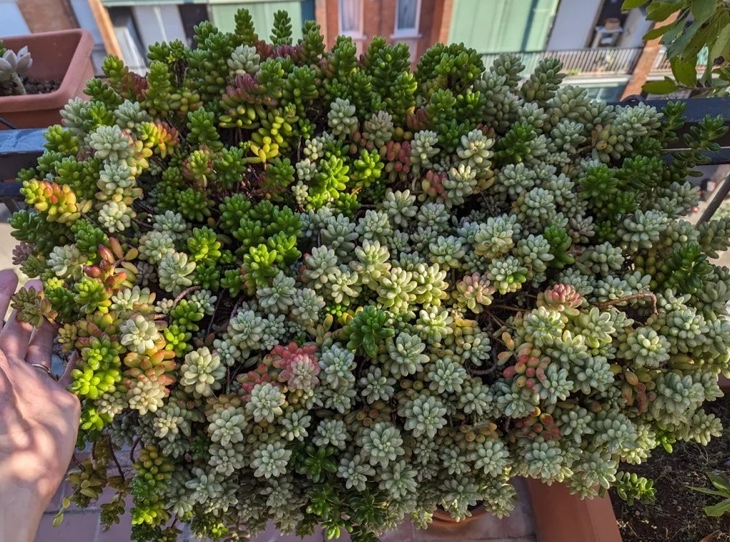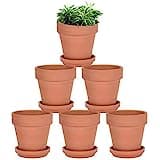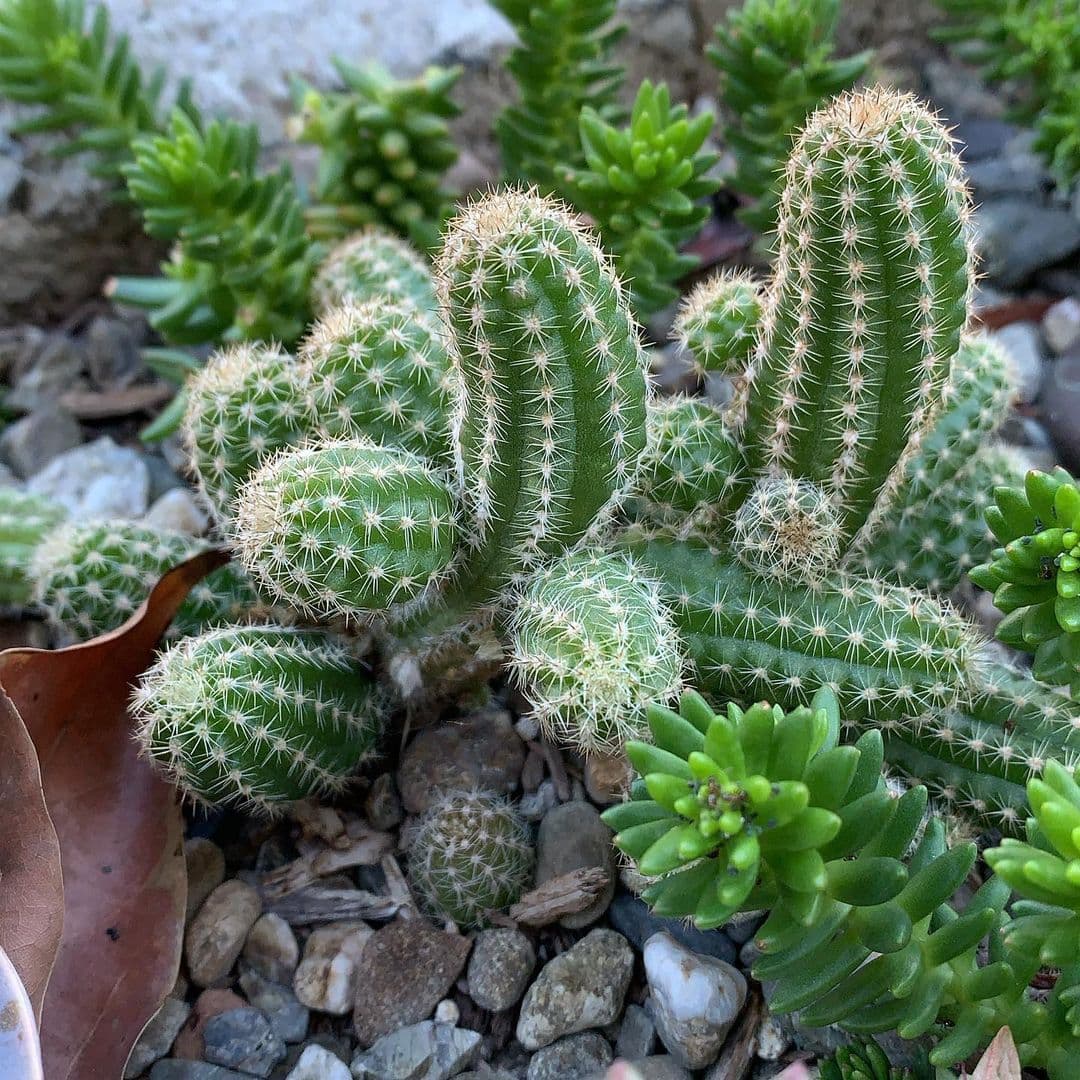Sedum Rubrotinctum "Jelly Beans"
Posted by Grace on September 26, 2023
Sedum Rubrotinctum, also known simply as Jelly Beans or Pork and Beans, is a popular succulent plant known for its vibrant and unique appearance.
Its quirky name, "Jelly Beans," is a nod to its small, jellybean-shaped leaves that resemble a sweet treat.
If you're considering adding this succulent to your collection, here are some quick facts and essential care tips to help you get started.
Quick Facts
- Native Habitat: Mexico
- Family: Crassulaceae
- Water: Moderate
- Sunlight: Full sun to partial shade
- Soil: Well-draining
Contents
- Origin of Sedum rubrotinctum
- Why it is called Sedum rubrotinctum?
- The Appearance of Sedum rubrotinctum Jelly Beans
- How to Care for Sedum rubrotinctum Jelly Beans
- Is Sedum rubrotinctum Jelly Beans Toxic to Pets?
- How to Propagate Sedum rubrotinctum Jelly Beans
- Where Can I Buy Sedum rubrotinctum Jelly Beans?
- FAQ
Origin of Sedum rubrotinctum
Sedum rubrotinctum is a hybrid between Pachyphyllum and Stahlii. It inherits its coloration from Stahlii, with leaves transitioning from a darker green to red under optimal lighting conditions. However, it retains more of the leaf shape characteristics of Pachyphyllum, although its leaves are typically not as long.
Why it is called Sedum rubrotinctum?
Sedum: The genus name, "Sedum," refers to a large and diverse group of succulent plants that belong to the family Crassulaceae. Succulents in the Sedum genus are known for their fleshy, water-storing leaves and their ability to thrive in a variety of climates.
Rubrotinctum: The species name, "rubrotinctum," is a Latin term that provides some insight into the plant's characteristics. In Latin, "rubro" means "red," and "tinctum" means "tinted" or "tinged." Therefore, "rubrotinctum" suggests that this particular species of Sedum is known for having leaves that can take on a reddish or tinted coloration.
In the case of Sedum rubrotinctum, the name likely refers to the plant's ability to display red or reddish hues on its leaves, especially when exposed to certain environmental stressors like intense sunlight or cooler temperatures. This red or tinted coloration can be a distinctive feature of the plant and may vary in intensity depending on the specific growing conditions.
The common name "Jelly Beans" is a more playful and descriptive name given to this succulent due to the small, bean-shaped leaves that resemble jellybeans, particularly when the leaves take on their colorful tints.
The Appearance of Sedum rubrotinctum Jelly Beans
Leaves
The most distinctive feature of Sedum Rubrotinctum Jelly Beans is its succulent, bean-shaped leaves. These leaves are typically about half an inch long and form densely on trailing stems. When grown in optimal conditions, the leaves are a bright green color. However, they can turn shades of red or pink around the edges in response to stress or direct sunlight, adding to their visual appeal.
Flowers
While the main attraction of Jelly Beans is undoubtedly its leaves, it also produces small, star-shaped yellow flowers during the spring and early summer. These delicate blossoms are a lovely addition to the plant's overall charm.
 Flowers of Sedum rubrotinctum
Flowers of Sedum rubrotinctum
How to Care for Sedum rubrotinctum Jelly Beans
Light
Jelly Beans prefers bright, indirect sunlight. While it can tolerate some direct sunlight, it should be protected from intense midday sun, which can scorch its leaves. Inadequate light can lead to leggy growth, so ensure it receives enough light to maintain its compact shape and vibrant colors.
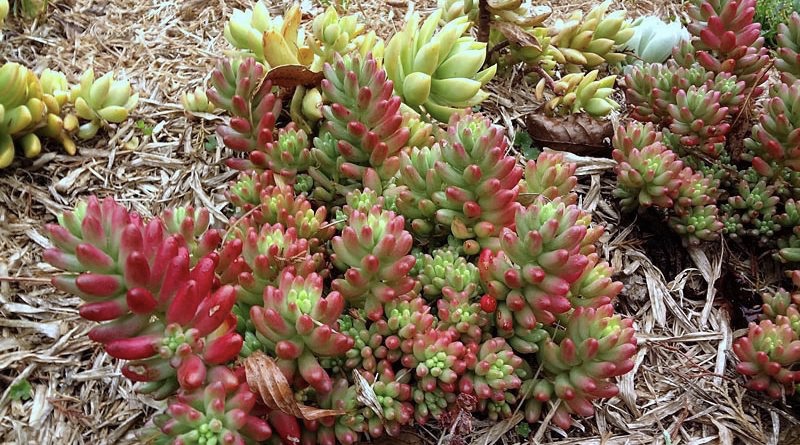 Sedum rubrotinctum shows red stress colors under the sun
Sedum rubrotinctum shows red stress colors under the sun
Watering
One of the reasons succulents like Sedum Rubrotinctum are so popular is their drought-tolerant nature. Water sparingly, allowing the soil to dry out between waterings. Overwatering can lead to root rot, so it's best to err on the side of underwatering with this plant.
Soil
Use well-draining soil specifically formulated for succulents or cacti. A mixture of potting soil and perlite or sand works well to ensure good drainage, preventing waterlogged roots.
Temperature
Jelly Beans thrive in temperatures between 60°F to 75°F (15°C to 24°C). They can tolerate occasional temperature drops, but it's essential to protect them from frost.
Humidity
Sedum Rubrotinctum Jelly Beans can tolerate low humidity levels, making them suitable for various indoor environments.
Fertilizing
Feed your Jelly Beans with a diluted, balanced liquid fertilizer during the growing season (spring and summer). Reduce or stop fertilizing during the dormant winter months.
Pruning
Pruning is generally not required for this succulent. However, you can trim back leggy or overgrown stems to maintain its shape and encourage bushier growth.
Repotting
Repotting is necessary when the plant outgrows its current container, typically every 2-3 years. Choose a slightly larger pot with adequate drainage holes and refresh the soil during repotting.
Dormancy
Sedum Rubrotinctum Jelly Beans may enter a period of dormancy during the winter, during which they require less water. Reduce watering frequency to avoid overwatering during this time.
Pests and Diseases
These succulents are relatively resistant to pests and diseases. However, keep an eye out for common succulent pests like mealybugs and aphids. Treat any infestations promptly with insecticidal soap or neem oil.
Is Sedum rubrotinctum Jelly Beans Toxic to Pets?
Sedum Rubrotinctum Jelly Beans is non-toxic to pets, making it a safe choice for households with cats or dogs. This succulent is not known to contain any compounds that are significantly harmful when ingested by pets.
How to Propagate Sedum rubrotinctum Jelly Beans
Propagation of Jelly Beans is relatively straightforward. You can propagate this succulent through leaf cuttings or stem cuttings. Allow the cuttings to callus for a few days before planting them in well-draining soil. Keep the soil lightly moist until new growth emerges.
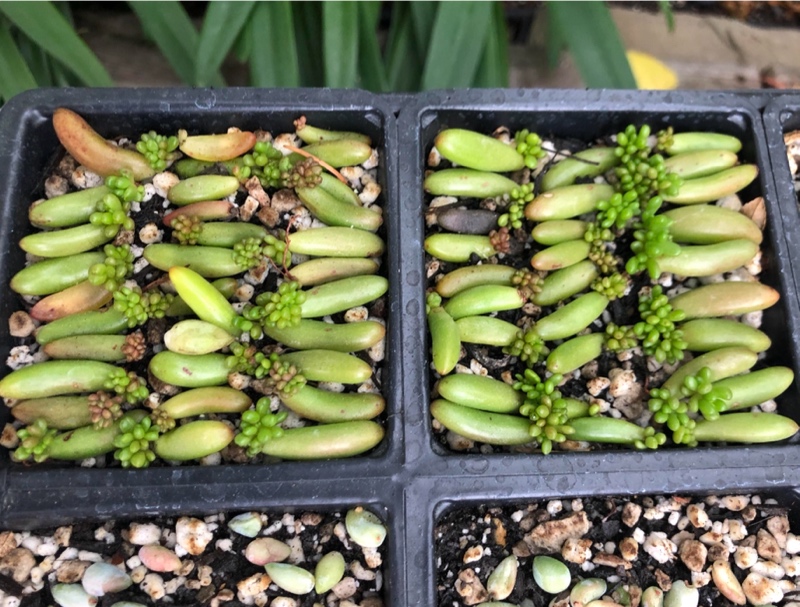 Propagate Sedum rubrotinctum from leaves
Propagate Sedum rubrotinctum from leaves
Where Can I Buy Sedum rubrotinctum Jelly Beans?
You can find Sedum Rubrotinctum Jelly Beans at many garden centers, nurseries, or online plant shops. They are a popular choice among succulent enthusiasts, so availability should not be an issue.
FAQ
How often should I water my Sedum Rubrotinctum Jelly Beans?
Water sparingly, allowing the soil to dry out between waterings. Frequency depends on factors like temperature and humidity, so adjust accordingly.
Can I grow Jelly Beans outdoors?
Yes, you can grow Sedum Rubrotinctum Jelly Beans outdoors, provided you live in a suitable climate. Ensure it receives bright, indirect sunlight and protection from frost.
How do I prevent leggy growth in my Jelly Beans?
Ensure your plant receives enough bright, indirect sunlight to prevent leggy growth. Pruning back leggy stems can also encourage bushier growth.
Is Sedum rubrotinctum cold hardy?
Sedum rubrotinctum, also known as "Jelly Bean," is considered one of the hardier succulents, capable of withstanding temperatures as low as 20°F (-7°C).
Read more about the hardiness of succulents in my article "Are Succulents Cold Hardy?".
